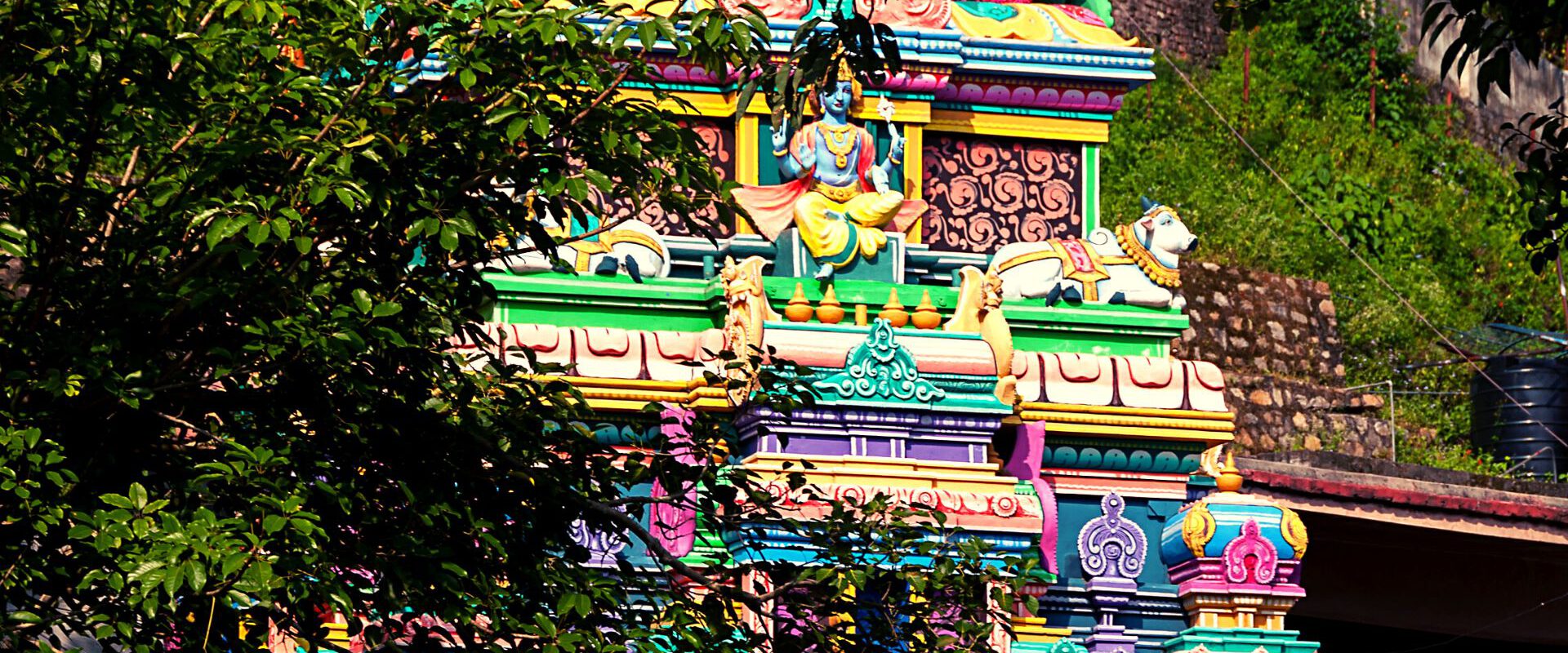
Neelkanth Temple
The Neelkanth Mandir is associated with a famous Hindu mythology. It narrates the story behind the temple’s unique name. According to the Hindu legend, the Neelkanth Mahadev Temple stands at the same place where Lord Shiva consumed the poison. This was at the time of Samudra Manthan or churning of the oceans by devtas (gods) and asuras (demons).
Shiva stopped the poison in his throat to enter his body due to which his throat turned blue. Therefore, Shiva got the name “Neelkanth” meaning “The one having a blue throat”. To commemorate Shiva’s sacrifice for mankind, devotees built this temple at the same spot where this event took place.
Architecture of Neelkanth Mahadev Temple
- The Neelkantha Mahadev Temple has an impressive architecture. The temple has a conical shape structure on which brightly painted sculptures are made.
- The entrance door of the temple showcases the event of Samudra Manthan which is beautifully sculpted on it.
- The entire story of the Samudra Manthan has been depicted on the walls of the temple. A Shivalinga has been installed in the inner complex of the temple.
- There is a natural spring in the temple, where the devotees can take a bath before entering the temple premises.
Fairs and Festivals held at Neelkantha Mahadev Temple
The temple observes several fairs and festivals. Devotees celebrate here with great gusto. Maha Shivratri is the most important festival at Neelkanth Mahadev temple. People celebrate it with fervor. The temple sees a large number of devotees who visit here to pay obeisance to Lord Shiva.
People offer flowers, honey, milk, water, coconut and bael leaves to appease the lord. The festival falls two times in a year, once in the month of:
- February-March (Maha Shivratri)
- And in July-August (Shraavan mass as per Hindu calendar).
